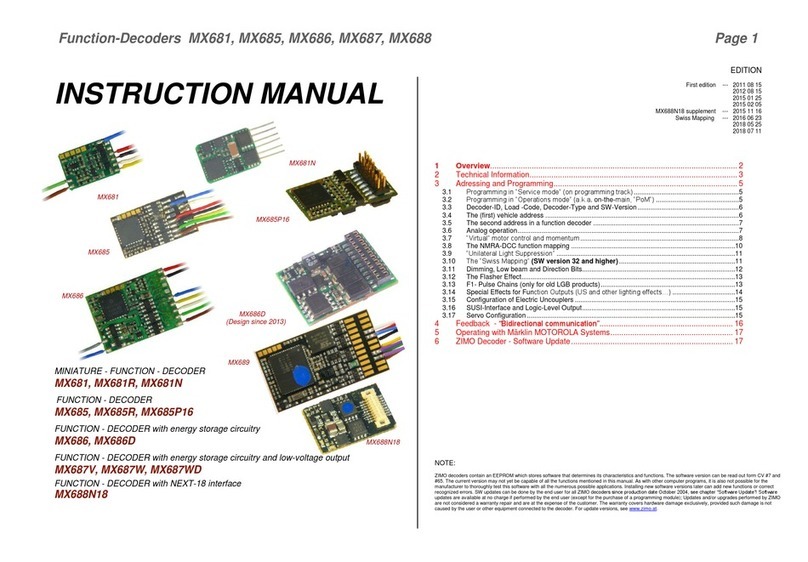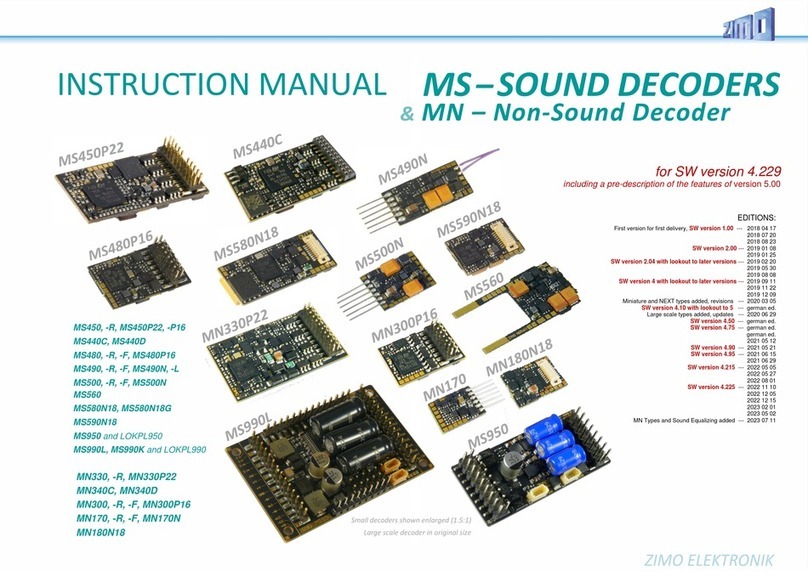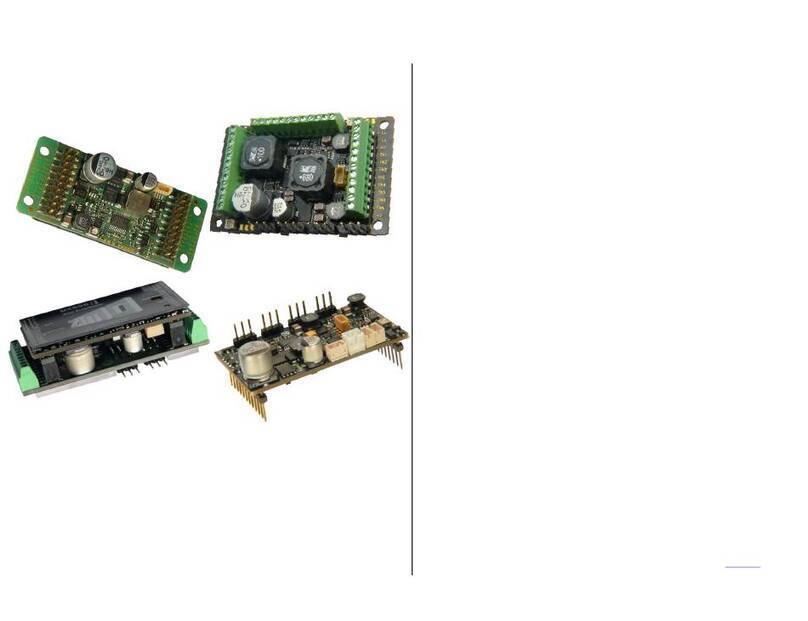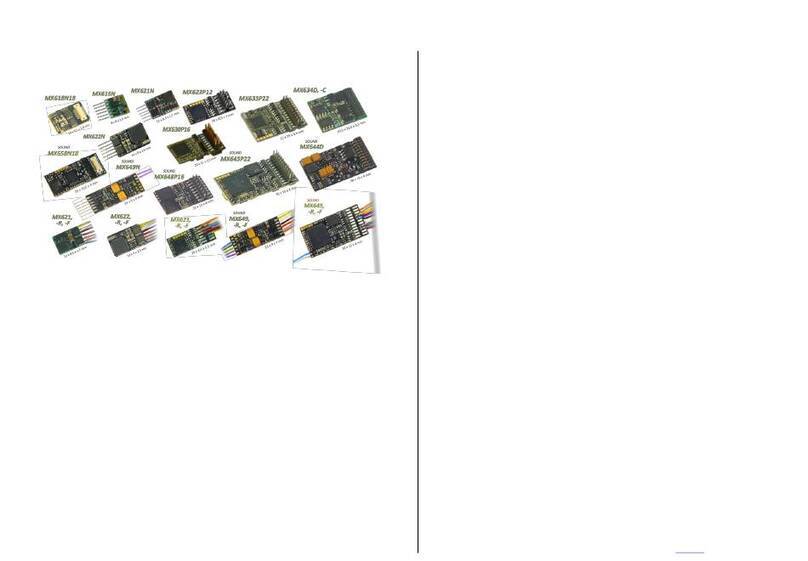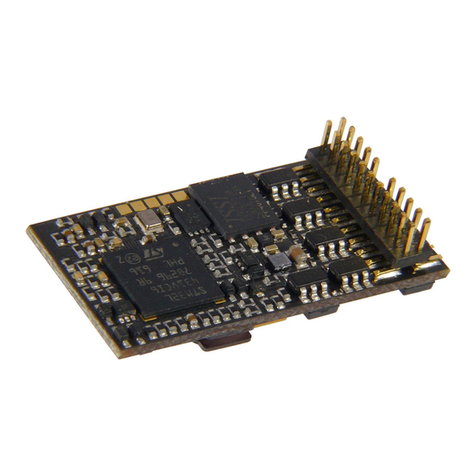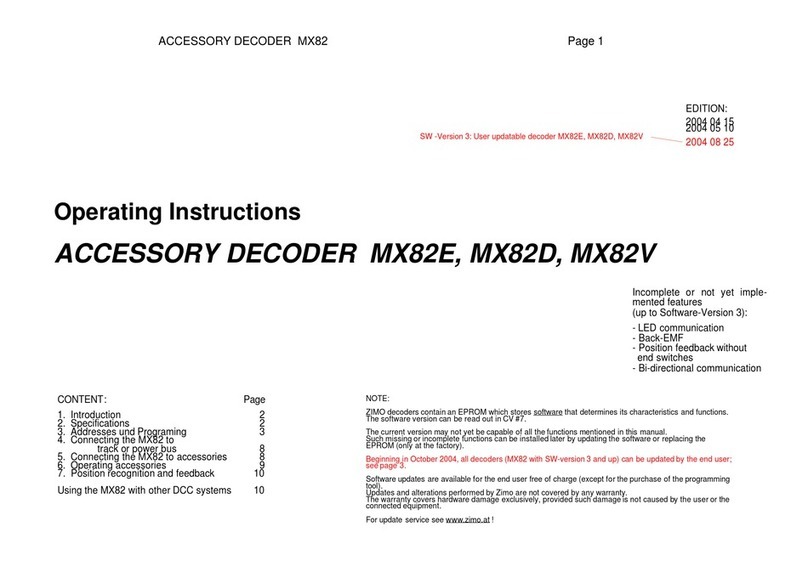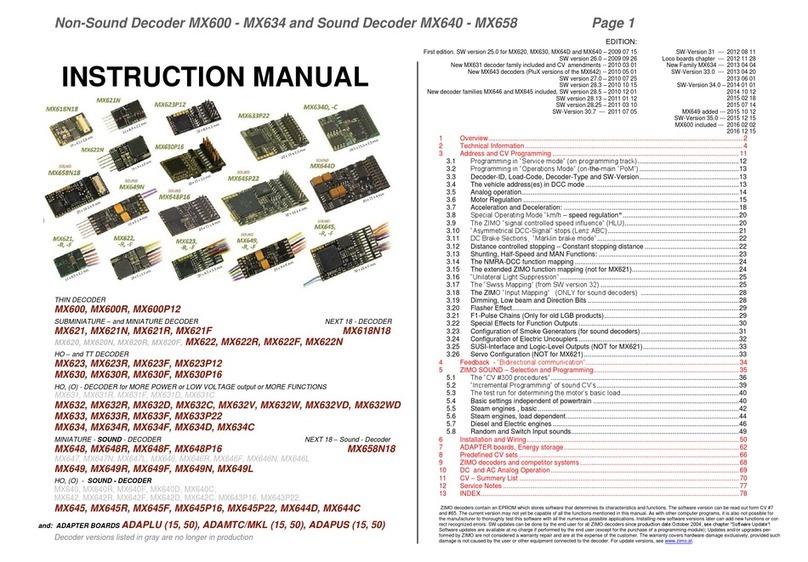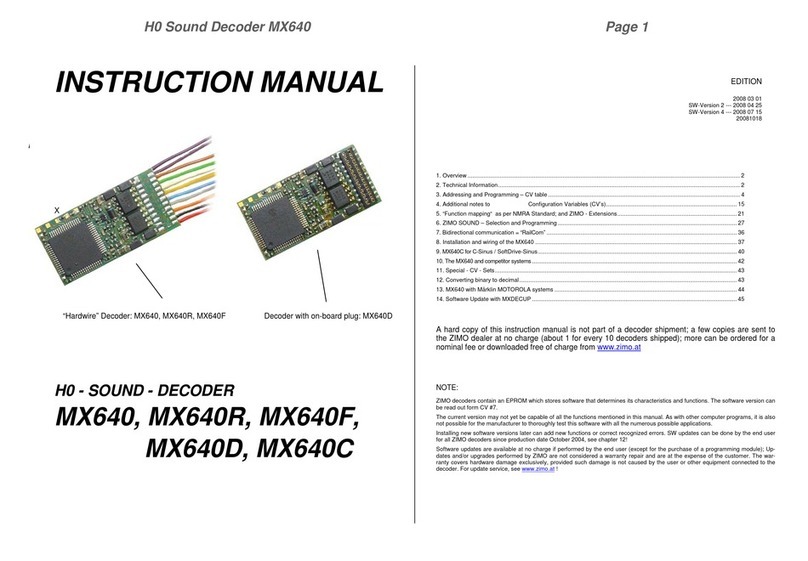1. Introduction
The MX68functiondecoderis like alocomotivedecoderbutwithout amotoroutput
stage.Upto 8functions (4ontheMX68L)areavailablefor interior coachlights, tail
lights and
otheraccessories.Itisalsosuitableasasecondarydecoderinalocomotiveorpilot
car.
Theconnectedaccessoriescan notonlybeswitched on/offbutcanalsobecontrol
-
ledby traveldirection.Besidesdimming,blinkingandsinglelight pulsestheMX68
offers even more features:
?The locationdependent functioncontrol,thatis,theautomaticactivationof
afunctionoutputonapredefinedsectionoftrack.Specialeffects,liketheauto-
maticactivationofinteriorcoachlightswhenapproachingatunneloranacous
-
tic signal before entering a station become possible. Zimo MX9 track section
modules are required for this feature to be used.
?theprogrammable secondaryaddress ,which canbe linked electronicallyto
the loco decoder. Thisallowsforthe assignment ofone functionkey to switch
all coach lights, head lights and taillights at the loco decoder address level.
?automaticprogramming ofthissecondaryaddress.Allcoaches that are part
of a train, containing an MX68 function decoder, can automatically accept a
new loco address as the secondary address.
SPECIFICATIONS:
Operating voltage on track or bus.......................................................... 12 - 24 V
Peak current per group, right or left .............................................................0.4 A
Idle current...........................................................................................max. 5 mA
Dimensions..................................................0.8”x 0.4”x 0.17” (20 x 10 x 4,5 mm)
..............................................................................................................................
2. Addresses and Programming
Everyfunctiondecoderneedsitsownaddress,justlikealocodecoder,sothatitmay
be accessed usingacab.AllNMRADCCcompliantdecodershave3astheirfacto
-
ry default address.
All NMRA compliant address modes are supported. This includes primary (short),
extended (long) and consist address commands. In addition, Zimo offers another
techniqueforthefunctiondecoder,knownassecondaryaddressing.Thisoffersthe
advantage of linking a complete train of lighted coaches by one key stroke.
Zimodecodersacceptregister,pagedanddirectprogrammingmodes.Thesediffe
-
renttypesofprogrammingmodesareinvisibletotheuser.Allthesedifferentmodes
ensurethatZimo decoderscanbeprogrammedbyanyNMRAcompliantcommand
station
Refer toYourcommandstationand/orthrottleinstructionstoprogramthisdecoder.
Thisdecoderacts likeanyotherNMRAcompliantdecoder,asfarasyourcommand
stationcantell.UsetheConfigurationVariableinformationonthefollowingpagesto
guide you.
Programming decoders can also be done with the assistance of your PC. Zimo of
-
fers ADAPT (free software), which is available at w3.zimo.at under Products/Part
-
ner Programs. Lenz, Intellibox and Zimo command stations are supported. See
website for details.
Groundto the left may beused to establish common ground with other decoders,if
needed or for ground supply to other accessories.
Page 2Function Decoder MX68
red
black
blue
white
yellow
brown
green
Right rail
left rail
common supply
front headlight (F0v)
rear headlights (F0r)
output #3 (F1)
output #4 (F2)












